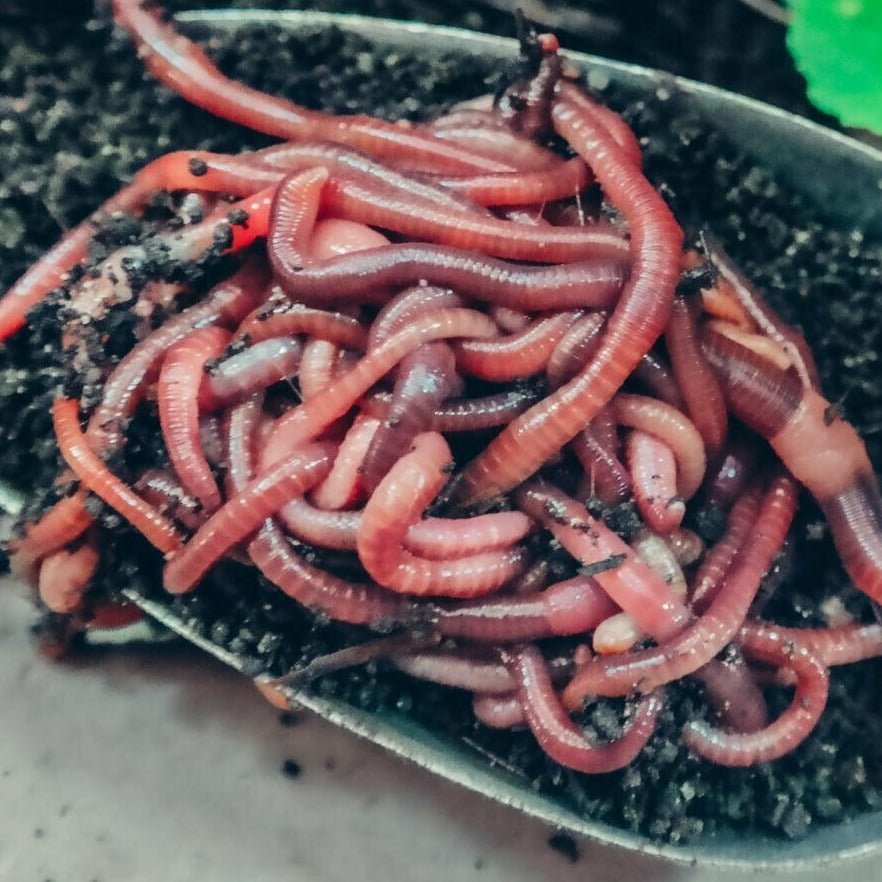Red worms: Best practices for care
Red worms: Best practices for care
Blog Article
Increase Dirt Health Naturally With Red Wigglers
The integration of red wigglers into dirt administration methods provides an engaging approach for improving dirt health and wellness normally. These earthworms not only change natural waste into useful vermicompost, yet their all-natural actions additionally advertise improved dirt structure, oygenation, and nutrient availability. Nonetheless, recognizing the ins and outs of establishing and maintaining a successful vermicomposting system is crucial to totally take advantage of their advantages. Checking out the necessary steps and possible difficulties included can significantly influence the efficiency of this sustainable strategy. What key facets should be taken into consideration to make best use of the benefits of these exceptional decomposers?
Benefits of Red Wigglers

Furthermore, red wigglers improve dirt framework by creating networks as they tunnel with the planet. This activity boosts oygenation and drain, helping with root development and making sure that plants obtain sufficient oxygen and wetness. In addition, the spreadings produced by red wigglers are high in nutrients such as nitrogen, phosphorus, and potassium, which are essential for plant advancement.
Red wigglers additionally help in the reduction of hazardous virus and parasites by outcompeting them for sources, further adding to a healthier soil setting. Their presence can lead to a decline in the demand for synthetic fertilizers and pesticides, advertising sustainable farming methods. Overall, integrating red wigglers into soil administration techniques provides an all-natural and effective methods of boosting soil vigor, therefore supporting durable plant growth and agricultural productivity.
Establishing Vermicomposting
Establishing a vermicomposting system is a practical method to harness the impressive benefits of red wigglers in enhancing soil health and wellness. red wigglers. To begin, pick a suitable container-- ideally, a plastic or wood bin with a lid to preserve moisture and temperature. The bin should have water drainage holes to stop excess water accumulation
Next, prepare bed linen material, which acts as an environment for the worms. Appropriate products consist of shredded newspaper, cardboard, or coconut coir. Go for a depth of 4-6 inches to give appropriate area for the worms.
Once the bed linens remains in location, present the red wigglers, usually at a ratio of one extra pound of worms for every single square foot of surface location in the container. Following this, add cooking area scraps such as fruit and vegetable peels, coffee grounds, and crushed eggshells. Prevent meat, dairy, and oily foods, as these can draw in parasites.
(red wiggler worms near me)
Caring for Your Worms
Keeping the wellness of your red wigglers is important for a flourishing vermicomposting system. Appropriate care makes sure that these beneficial microorganisms can effectively break down organic matter and enhance your dirt.
Feeding your worms is another crucial element of their treatment. Red wigglers grow on kitchen area scraps such as fruit and veggie peels, coffee premises, and smashed eggshells.
Temperature monitoring is essential; worms prefer a series of 55 to 77 degrees Fahrenheit. Ensure the bin is not revealed to route sunlight or severe cold. On a regular basis examine for indications of distress, such as excessive worm movement or unusual smells, to resolve any kind of potential problems immediately. By following these guidelines, you will foster a healthy ecosystem for your red wigglers.
Making Use Of Worm Castings in Soil
Worm spreadings, often described as "black gold," are a powerful modification that can significantly improve soil health and fertility. red wigglers. These nutrient-rich, natural plant foods are produced by red wigglers during their food digestion process, causing a finely textured material that is beneficial for plants and dirt alike
Incorporating worm castings into your dirt enhances its structure, enhancing oygenation and water retention. This is especially beneficial for sandy soils that drain pipes as well swiftly, as well as heavy clay soils that can become compressed. Worm spreadings are abundant with important nutrients, including nitrogen, phosphorus, and potassium, which are important for plant development.

Eventually, using worm castings cultivates a growing ecological community within the dirt, bring about much healthier plants and even more sustainable horticulture methods.
Tips for Effective Composting
Effective composting calls for mindful attention to a few essential principles that can considerably improve the high quality of the last item. Balance is important; maintain a correct proportion of environment-friendly products (nitrogen-rich) to brown materials (carbon-rich), ideally around 1:3. This equilibrium facilitates efficient disintegration and decreases smells.
Second, oygenation plays an essential role. Regularly turning the garden compost heap boosts oxygen circulation, which increases microbial activity and quicken the composting procedure. Purpose for a heap size of at the very least three feet by three feet to maintain heat, which further advertises disintegration.
(Raleigh Worm Farms)
Moisture web content is another necessary factor; the garden compost must be damp however not soggy. A good general rule is to try here achieve a moisture degree comparable to that of a wrung-out sponge. Too much water can cause anaerobic conditions, while insufficient can decrease decay.
Finally, monitor the temperature of the garden compost. A temperature level series of 130 ° F to 160 ° F suggests energetic composting and assists kill virus and weed seeds. By adhering to these principles, you will certainly produce a nutrient-rich compost that supports dirt wellness and improves plant development.
Conclusion
Incorporating red wigglers right into horticulture methods improves soil wellness via natural procedures. These worms add to the breakdown of organic products, resulting in nutrient-rich vermicompost that improves soil structure and fertility. Their tunneling activities promote aeration and drain while subduing dangerous microorganisms and bugs. By developing and maintaining a vermicomposting system, garden enthusiasts can foster a sustainable community that supports robust plant development and lasting dirt resilience, eventually profiting agricultural performance and ecological health.
Report this page